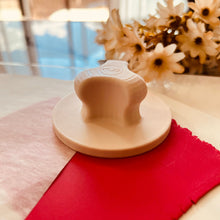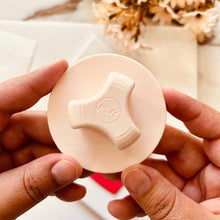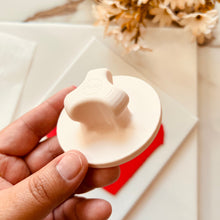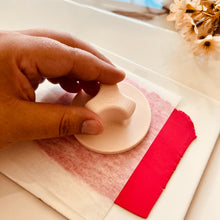
Do your clay pieces sometimes have bubbles or an uneven back?
And what you really want is for them to look flat, smooth, and flawless.
Here’s how I do it:
I use my Hand Floater for Clay
- Place your piece on a ceramic tile
- Put parchment paper or a regular sheet of paper on top
-
Glide the tool over it:
• First, from the center to the sides to push out the air
• Then, from top to bottom to level it
When you lift the paper:
- Bubbles disappear
- Your clay sticks to the tile
- You get a smooth back on your pieces: no more bubbles or uneven spots
Why use the Hand Floater for Clay instead of a roller?
- Roller: stretches the clay, thins it, and often leaves uneven thickness
- Hand Floater: presses, joins, and levels without deforming your piece
Pros of the roller: great for stretching large clay sheets
Cons of the roller: can leave irregularities
Pros of the Hand Floater: removes bubbles, joins layers, and evens out the clay
Cons of the Hand Floater: doesn’t stretch the clay
ln short: the roller shapes, but the Hand Floater for Clay keeps your clay smooth and bubble-free.








